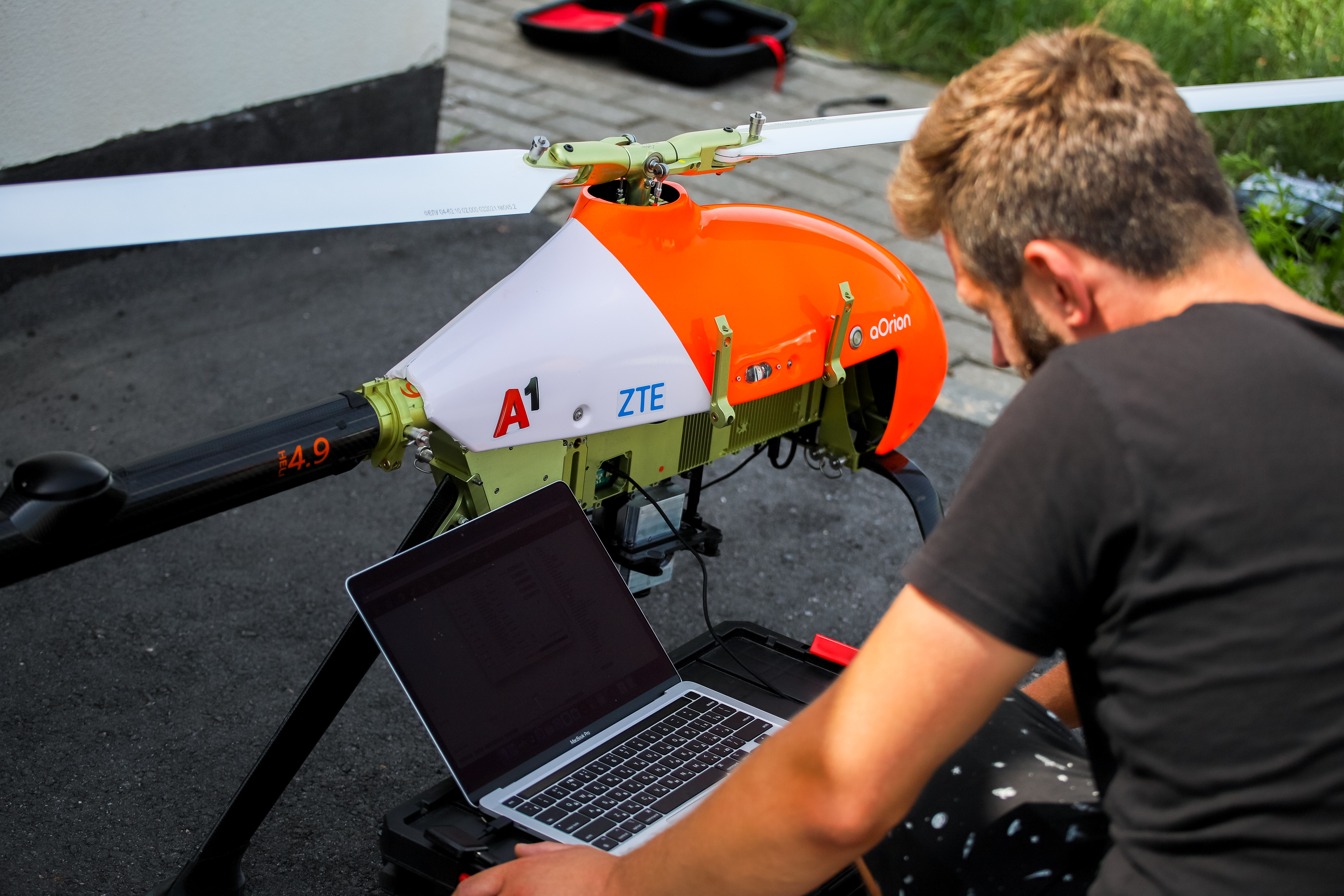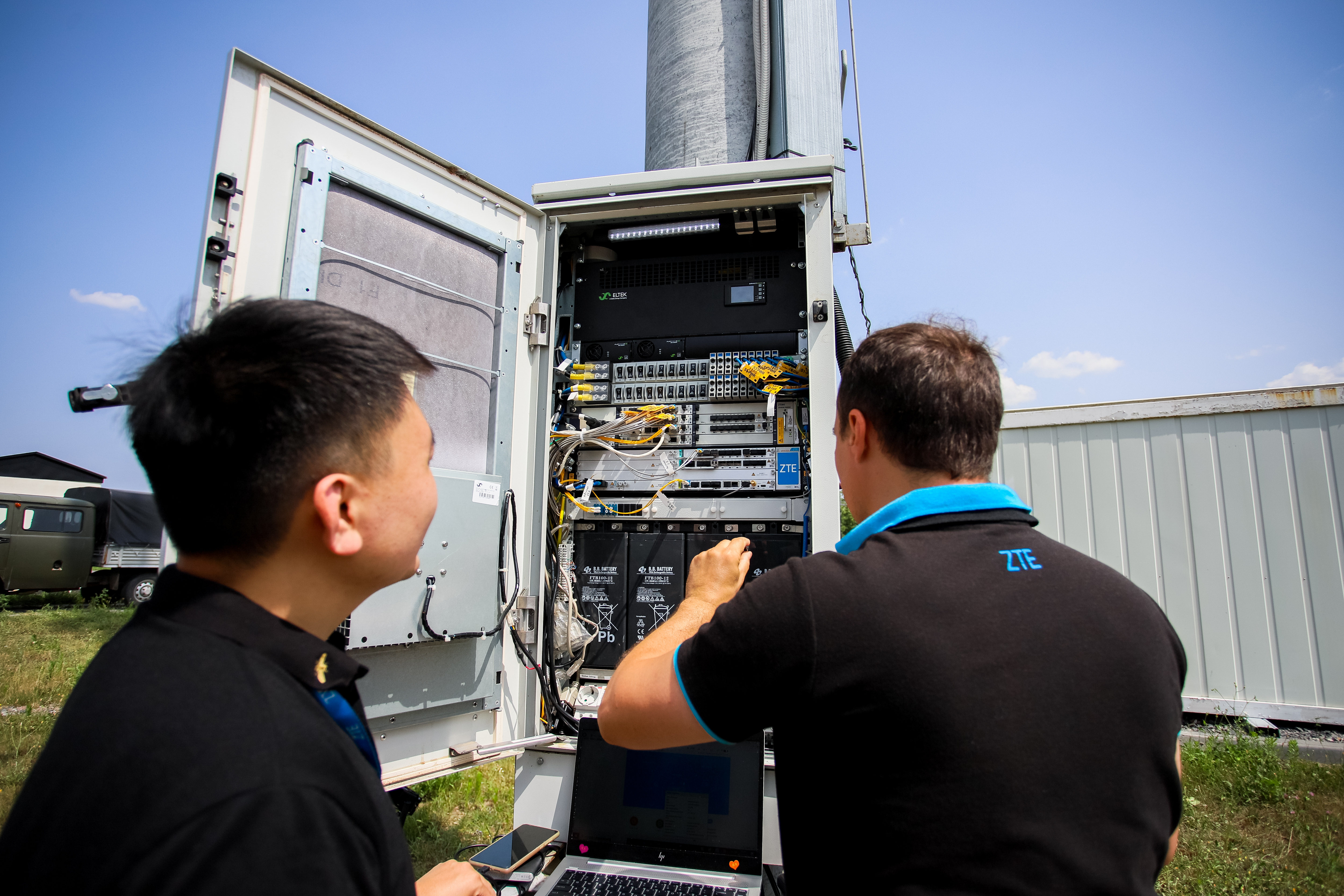An autonomous helicopter drone connected via 5G SA network is running the inspection of the solar plant of A1
A1 has inspected solar panels at A1’s own solar power plant, one of the largest in Belarus, using 5G Standalone (SA) test network capabilities implemented together with ZTE. During the inspection, an aOrion helicopter drone was used to monitor the plant. The drone collected infrared images of solar panels for processing and analyzing of its conditions while in parallel a live video broadcast in HD resolution went on. This is the country's first experience of using an autonomous 5G network to control an unmanned aerial vehicle, and collect and transmit the required data in realtime as well. To control the process of producing "clean" energy, not only high-tech, but also environmentally friendly solutions were used.

“For the first time in Belarus, 5G test network has been utilized to monitor such an object as a solar power plant. We can convincingly demonstrate the new capabilities of modern communication standards for safe, high-quality and comprehensive monitoring of various strategically important infrastructures. Without the use of in-person monitoring and surveillance, 5G SA networks can be used to connect various smart devices, which allows resolution of wide range of tasks, whilst minimizing the impact on the ecology and the environment”, said Christian Laque, A1 Senior Director for Technology.
The drone that is used for solar panel inspection is controlled remotely through A1 5G test networks, created on Standalone architecture to gain all the benefits of the newest technologies like for instance lowest latency, highest reliability, network slicing. Unlike networks with a Non-Standalone Architecture (NSA), "clean" 5G network was deployed without being tied to the infrastructure of 4G / LTE networks. The 5G SA network test launch project was carried out by A1, with ZTE’s massive MIMO and beamforming technologies.

“ZTE, as one of the global leaders in 5G, truly believes that 5G is driving the development of the verticals and the digital transformation of industries. Deploying a variety of 5G applications enables the move from traditional manufacturing to intelligent manufacturing while reducing costs and increasing efficiency and quality. Taking the unmanned drone as an example, we are able to demonstrate the advantages of 5G networks – low latency and high data transmission rates”, said Wei Wei, director of ZTE FLLC (ZTE in Belarus).
5G connectivity has allowed remote and real-time monitoring of solar panels in an area equivalent to the scale of 60 football pitches. The professional aOrion drone, with the battery life of 120 minutes, sets a battery record not only for multicopters but also for all electric helicopters, including piloted ones. Throughout this time, the equipment installed on it transmitted high-definition video through the test network. At the same time, the device can transmit other types of data: images and even 3D models of objects that are under surveillance.

The drone is connected and controlled via 5G networks, while its response speed is significantly faster than for mobile communication networks of other generations. This makes the so-called one-button flight possible – in a fully automatic mode when the operator sets only waypoints and the necessary parameters.
“At Alfa Orion, we have equipped our electric unmanned helicopter drone with a 5G modem and have already performed test flights using the 5G channel. The next step is an autonomous monitoring of solar panels in A1 park. The use of 5G in unmanned technologies allows a much faster, real-time data transmission from the drone to the ground control station or to the cloud”, said Vadim Cherevko, Founder of Alfa Orion LLC.

Moving forward, the solution tested by A1, ZTE and aOrion can be used for inspection of various facilities for instance oil/gas pipelines, railways, construction areas, powerlines (including in difficult weather and climatic conditions or where human participation is unsafe or unreasonable), delivery of goods, participation in drone racing and other tasks that require careful real-time monitoring. In addition, such developments can become the basis for the use of 5G slicing technology – the ability to programmatically divide network resources into sets of services that will be available to the subscriber according to his/her subscription to provide highest security and availability.

